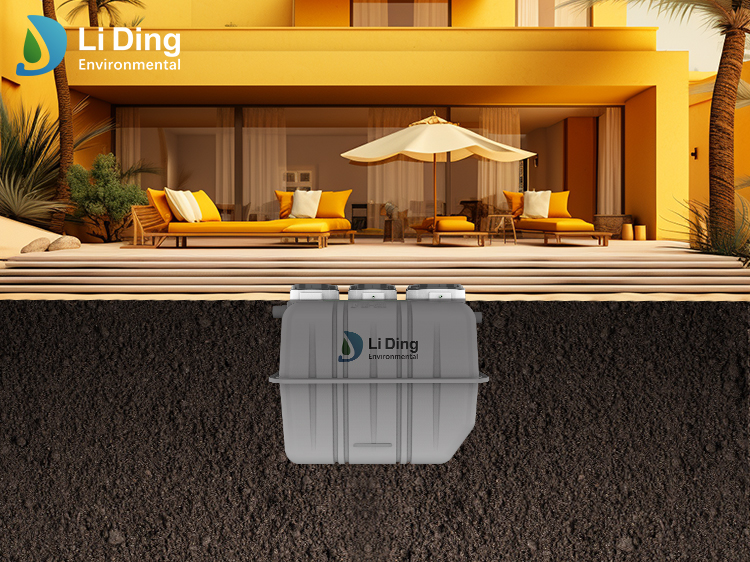Angola’s Wastewater Treatment Market Status and Demand Analysis
With the acceleration of urbanization, Angola’s urban population is growing rapidly, and infrastructure development is gradually improving. However, the wastewater treatment system still faces severe challenges. According to relevant statistics, the volume of domestic wastewater discharge in Angola has been increasing annually. However, due to the low coverage of wastewater treatment facilities, a large amount of untreated wastewater is directly discharged into the natural environment, exacerbating water pollution problems and impacting both the ecosystem and public health.
The key market demand drivers include:
1.Accelerated urbanization: The urbanization rate in Angola continues to rise, leading to a surge in demand for wastewater treatment infrastructure.
2.Increasing environmental pollution pressure: The direct discharge of untreated wastewater causes water pollution, prompting the government to place greater emphasis on environmental management and wastewater treatment market development.
3.Stricter policies and regulations: The Angolan government is implementing more stringent environmental regulations and higher wastewater discharge standards, driving the upgrade of the wastewater treatment industry.
4.Limited infrastructure funding: The high investment required for centralized wastewater treatment plants and the difficulty of pipeline network construction make decentralized wastewater treatment technology a more practical solution.
5.Growing public health awareness: Wastewater pollution is directly linked to drinking water safety and public health, increasing residents’ demand for effective wastewater treatment.
Technical Advantages and Suitability of the Liding Johkasou
To address Angola’s market demands, the Liding Johkasou offers an efficient, energy-saving, and environmentally friendly solution that is easy to maintain, making it well-suited to the local wastewater treatment challenges.
1.Decentralized wastewater treatment, ideal for areas with insufficient pipeline networks
• Designed with a modular structure, eliminating the need for complex sewage pipeline construction, making it suitable for households, communities, schools, hospitals, and campsites.
• The equipment can be buried underground, minimizing land occupation and adapting to both urban and rural environments.
2.High-efficiency wastewater treatment ensuring compliant effluent quality
• Utilizes the AOO+MBBR treatment process to efficiently remove COD, BOD, ammonia nitrogen, and other pollutants, ensuring effluent meets international discharge standards or can be reused.
• Equipped with high-efficiency biological fillers to enhance microbial activity, improving wastewater treatment efficiency and accommodating fluctuations in water quality.
3.Low energy consumption and easy maintenance, reducing operational costs
• Features low energy consumption with an energy-saving aeration system, minimizing long-term operating costs.
• The system is highly automated with remote monitoring and self-operating capabilities, reducing the need for manual supervision.
• Long maintenance intervals and durable materials make it suitable for areas with underdeveloped infrastructure.
4.Adaptability to Angola’s climate and environmental conditions
• Constructed from corrosion-resistant and high-temperature-resistant materials, allowing it to withstand Angola’s tropical climate.
• Offers flexible treatment capacities, customizable to meet local wastewater treatment needs of different scales.
Market Application Prospects of the Liding Johkasou in Angola
Considering Angola’s ongoing urbanization, environmental governance needs, and infrastructure conditions, the decentralized wastewater treatment technology of the Lidin Baixun® Purification Tank can effectively complement centralized wastewater treatment plants. It provides cost-effective solutions for governments, enterprises, and communities.
Application Scenarios:
• Urban and rural households: Solves daily domestic wastewater discharge issues and improves rural sanitation.
• Schools, hospitals, and commercial centers: Meets the wastewater treatment needs of large public facilities, ensuring hygiene and safety.
• Industrial parks and construction sites: Treats both temporary and long-term wastewater discharge, preventing contamination of nearby water bodies.
• Tourist attractions and resorts: Helps preserve natural landscapes and ecosystems while enhancing the visitor experience.
Conclusion
With its decentralized, high-efficiency, energy-saving, and intelligent design, the Liding Johkasou provides an optimal wastewater treatment solution for Angola and other developing countries. As market demand continues to grow, Liding Environmental will actively collaborate with local governments, enterprises, and environmental organizations to promote the development of Angola’s wastewater treatment industry, contributing to a cleaner, healthier living environment for local residents.
Post time: Apr-08-2025


